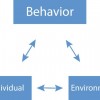 Attribution theory is defined as the way that individuals envision the success or failure of their own behavior or the behavior of others. This 4-page fact sheet explains how instructors, whether formal or informal, can use this theory in their learning environment to enhance their learners’ knowledge and comprehension. Written by Eric D. Rubenstein and Andrew C. Thoron, and published by the UF Department of Agricultural Education and Communication, September 2014.
Attribution theory is defined as the way that individuals envision the success or failure of their own behavior or the behavior of others. This 4-page fact sheet explains how instructors, whether formal or informal, can use this theory in their learning environment to enhance their learners’ knowledge and comprehension. Written by Eric D. Rubenstein and Andrew C. Thoron, and published by the UF Department of Agricultural Education and Communication, September 2014.
http://edis.ifas.ufl.edu/wc162
Tag: Eric D. Rubenstein
Setting Goals to Promote Academic and Personal Achievement
 Learners begin to envision their futures in both academic and personal settings even as children. The future that we develop motivates us to engage in learning environments, work experiences, and social encounters/settings. As instructors, we have the opportunity to help learners develop academic and personal goals that will develop and shape their future. This 3-page fact sheet assists instructors in developing their knowledge of goal theory, thereby allowing them to assist learners in utilizing their personal and academic goals to develop goal-directed achievement behaviors. Written by Eric D. Rubenstein and Andrew C. Thoron, and published by the UF Department of Agricultural Education and Communication, 2014.
Learners begin to envision their futures in both academic and personal settings even as children. The future that we develop motivates us to engage in learning environments, work experiences, and social encounters/settings. As instructors, we have the opportunity to help learners develop academic and personal goals that will develop and shape their future. This 3-page fact sheet assists instructors in developing their knowledge of goal theory, thereby allowing them to assist learners in utilizing their personal and academic goals to develop goal-directed achievement behaviors. Written by Eric D. Rubenstein and Andrew C. Thoron, and published by the UF Department of Agricultural Education and Communication, 2014.
http://edis.ifas.ufl.edu/wc166
Inclusion of Diverse Learners in the Educational System
 Every student in the United States has the right to an education. But not every student is ready, prepared, or willing to learn. Teachers trying to fully engage students in the learning environment can find it difficult when working with students from diverse backgrounds. Forms of diversity such as socioeconomic status, ethnicity/race, learning style, cognitive ability, gender, and ability to process and store knowledge can cause an “achievement gap” between students. This 4-page fact sheet highlights effective educational strategies for engaging students in the learning environment and assisting in closing achievement gaps. Written by Eric D. Rubenstein and Andrew C. Thoron, and published by the UF Department of Agricultural Education and Communication, July 2013.
Every student in the United States has the right to an education. But not every student is ready, prepared, or willing to learn. Teachers trying to fully engage students in the learning environment can find it difficult when working with students from diverse backgrounds. Forms of diversity such as socioeconomic status, ethnicity/race, learning style, cognitive ability, gender, and ability to process and store knowledge can cause an “achievement gap” between students. This 4-page fact sheet highlights effective educational strategies for engaging students in the learning environment and assisting in closing achievement gaps. Written by Eric D. Rubenstein and Andrew C. Thoron, and published by the UF Department of Agricultural Education and Communication, July 2013.
http://edis.ifas.ufl.edu/wc150